Horseradish / All Year / Edible
Common Names
Horseradish, Wild Horseradish
Botanical Name
Armoracia Rusticana
Scientific Classification
Kingdom – Plantae
Order –Brassicales
Family – Brassicaceae
Physical Characteristics for Horseradish
Wild Horseradish looks most similar to dock and the easiest time of the year to identify between the two is in autumn when the dock leaves start to look rough and get red damage marks on the leaves. Horseradish leaves will stay vibrant and lush green. I always think if you see something that looks like an incredibly healthy dock leaf in autumn you’ve most likely got yourself some horseradish.
Leaves
Hairless, bright green, unlobed leaves that can grow up to 1 metre long and resemble dock leaves. When crushed they give off the horseradish scent.
Flowers
The white four-petalled flowers are scented and grow in dense panicles. The flowers as with many members of the Brassicaceae family form a cross.
Roots
A large, white, tapered root, the root when intact doesn’t really smell but once grated, chopped or damaged it will release the familiar aroma. The root can become quite gnarled and be difficult to remove depending on ground conditions and permission must be gained from the land owner before digging.
Wild Horseradish Foraging Video
Habitat
Native to Western Asia it arrived in the UK before the 15th century and has thrived, it causes no problems in the wild.
Commonly found on waste ground, woodland edges and by the coast.
Known Hazards
Horseradish contains volatile oils namely allyl isothiocyanate (mustard oil) and can be poisonous if eaten in large quantities.
People who are pregnant or lactating, suffering from hepatitis, acid reflux, thyroid disorders, hyperacidity and inflammatory bowel disorders, should avoid consumption of large quantities.
Could be Confused with
Some members of the Dock (Rumex) family have similar leaves but lack the horseradish scent when crushed. They are also dull in appearance.
Edible Uses
The leaves and the roots are both edible.
The young leaves can be eaten raw or cooked like spinach or cabbage.
The root is really the best part of this plant. It is best to harvest it in early winter. It is much stronger in flavour than the cultivated variety and is traditionally used to make horseradish sauce.
Find our favourite Horseradish Recipes right here
Notes on Herbal uses
It also has many uses in herbalism including to treat skin redness, digestive disorders, constipation, chest infections, arthritis, chilblains, muscle soreness, and urinary tract infections.
It has also been used as a diuretic, antiseptic and expectorant. Research is being undertaken into potential anti-tumour properties.
Extra notes from the Foragers
Horseradish is something that we all have probably eaten in the past, but wild Horseradish can be found growing all over the UK and tastes great.



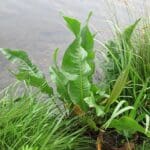
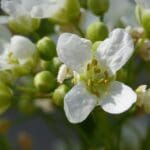
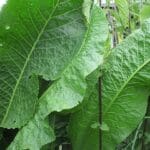
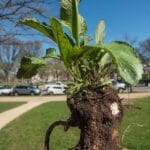
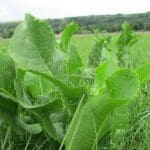
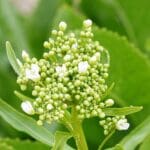
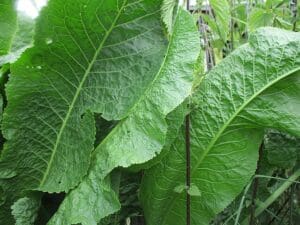
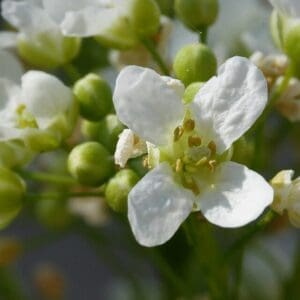
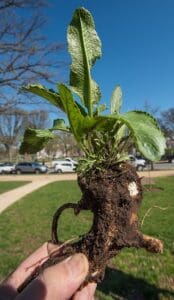



1 reply on “Wild Horseradish (Armoracia Rusticana) Identification”